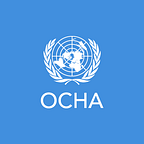I saw my city die: Civilian suffering in cities
Around the world, millions of civilians are trapped in armed conflict, hiding and running for their lives amid widespread destruction. For this year’s World Humanitarian Day on 19 August, the global community is coming together to reaffirm that civilians are #NotATarget.
In this essay, the International Committee of the Red Cross explains how cities in Syria, Yemen and Iraq have become today’s battlefields, and what can be done to protect civilians in urban areas.
As stories from conflicts in Iraq, Syria and Yemen fill our screens daily, images of destroyed skylines have become frighteningly common. Urban scenes of families barely surviving amid twisted metal and walls peppered with shrapnel and bullet scars are sadly too familiar.
They are images that point to a worrying trend: urban warfare has become the norm. The battles of the twenty-first century are taking place in cities.
The International Committee of the Red Cross (ICRC) recently published a report titled ‘I saw my city die’, which found that five times more civilians die in offensives carried out in cities than in other battles. The research showed that over the past three years, wars in cities in Iraq and Syria accounted for at least 70 per cent of all civilian deaths in six provinces in those countries. ICRC’s Regional Director for the Middle East, Robert Mardini, warned: that “a new scale of urban suffering is emerging, where no one and nothing is spared by the violence.”
The report also includes testimonies from residents who have experienced this urban warfare up close. Yasser Mustafa Najjar has lived with his family in Syria’s east Aleppo area for decades. The conflict in that country brought daily deprivation and danger, with shortages of food, water and fuel. But the battle for Aleppo brought personal tragedy to Yasser. “My son died here in the rubble,” he said. “Two floors collapsed on him. He suffocated… He was a good person, God bless him, generous, a hard worker, respectful and honest.”
The fighting in Aleppo represents the complex suffering of civilians who are caught up in twenty-first century urban battlefields. In a city, everything is connected and the impacts of warfare are quickly multiplied. A single pipe broken by a high-impact explosive weapon in a populated area can deprive 100,000 people of water. That same weapon may also destroy the neighbourhood’s sewage system, causing thousands of people to fall ill and placing further strain on already overstretched hospitals. Local economies collapse and populations flee, leaving fewer doctors and engineers, and no money to pay the salaries of those who remain. One attack can trigger a ripple effect of long-term suffering.
These battlefields have also seen the return of an ancient form of warfare — the siege. Communities trapped between warring parties are suffering extreme deprivation, lacking even the most basic ingredients of a normal life: food, electricity, water and health care. Physical suffering is compounded by the hidden impacts on people: the psychological and emotional toll of frequent bombardment or sieges is profound and long lasting.
The length and intensity of urban wars in the Middle East, their geographic scope and their long-term humanitarian consequences are going well beyond what we have seen in recent decades. They are a significant factor driving the greatest global refugee and migration crisis that we have seen since the Second World War. In 2016, an estimated 65 million people were displaced by conflict or persecution. For many people, intense urban warfare means they have nothing to return to even when the fighting stops.
It’s a depressing picture. But it doesn’t have to be this way. International humanitarian law was borne of the horrors of war and is designed to protect people from the worst elements of warfare. It states that neither civilians nor civilian infrastructure should be targeted; that medical and humanitarian personnel should not be harmed; that armed parties must use force that is proportionate to the circumstances; and that prisoners should be treated with dignity.
The focus on the protection of civilians on this year’s World Humanitarian Day is a timely reminder of the importance of this message. Ignoring the rules of war only prepares the ground for further rounds of violence and increases the suffering of civilians on all sides of a conflict.
The consequences of today’s urban conflicts will be felt for generations. To improve the situation of victims of armed conflict, urgent and long-term commitment is needed from everyone — every fighter and commander from warring parties and the States that support them, the international community, humanitarians and ordinary citizens around the world.
At the heart of this must be a recommitment to the protection of civilians and civilian infrastructure in times of war. Winning a city after ruining it and bleeding its populace is never a victory.
